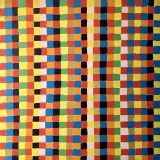Granary Ladders A Connection to the Other Side of the World
February 23, 2016
Imagine if, instead of reaching for your conveniently nesting Tupperware, you had to climb a ladder onto the roof of your apartment in order to get to your food every day. The Dogon people of Mali have lived this way for centuries, storing food in elevated granaries and on their rooftops. To access their stores, the Dogon craft unique ladders from naturally forked trees. Using an ax-like tool called an adze, thick and angular toeholds are carved into the forked tree trunks, while the upper “Y” shape is flattened on the back to increase stability. The result is a graceful, yet utilitarian design that has come to symbolize the Dogon people. In the West, the ladders have become prized for this aesthetic. Ladders with a rich patina- a glossy luster built up over repeated rubbing from use- are especially valued. Adorning many of Chapman’s hallways, the granary ladders are treasured pieces of cultural and artistic history.
The Dogon people of Mali settled mainly among cliffs in inaccessible and rugged areas. The elevated granary ladders were later used for more than reaching storage units. The ladders bridged divisions in the cliffs and allowed people to move through the topography. As historians and ethnographers searched for a deeper meaning behind these ladders, their significance grew. Though questioned by recent scholars today, French ethnographer Marcel Griaule proposed that the ladders were part of a creation story such as “Noah’s Ark” for all living things at the beginning of time. Further digging showed that the ladders also held an ancestral attachment. The Dogon people crafted miniature granary ladders to help spirits of ancestors climb up onto the roof of the house, where the ancestral altar was located.
Though simple and plain in appearance, these ladders quickly became a symbol of endearment and a cultural tell-tale in Mali. An acclaimed Transcendental essayist and poet, Ralph Waldo Emerson introduced the concept of “the over-soul.” In layman’s terms, “the over-soul” is the connection humans have to their ancestral history. The granary ladders are an embodiment of “the over-soul.” The ladders have resided at Chapman since 2005, and with each passing year, their presence in our hallways draws a connection to the existing Dogon civilization thousands of miles away.




